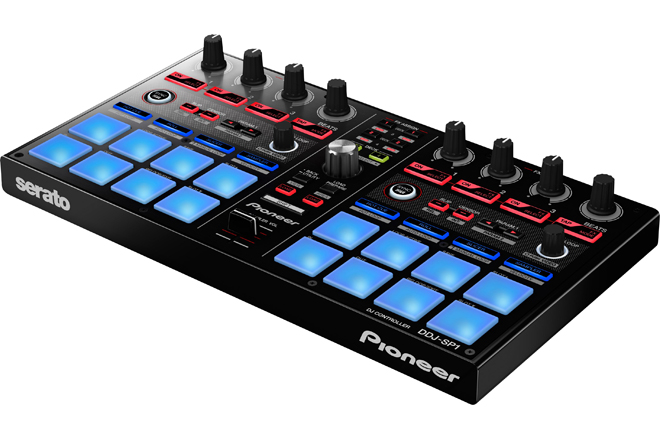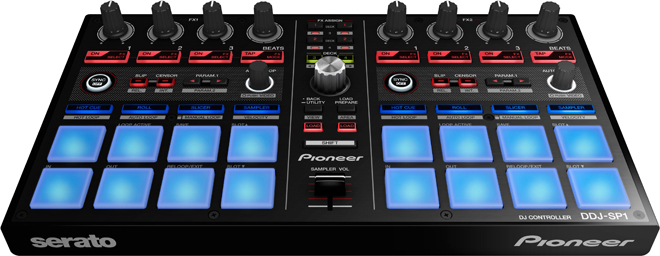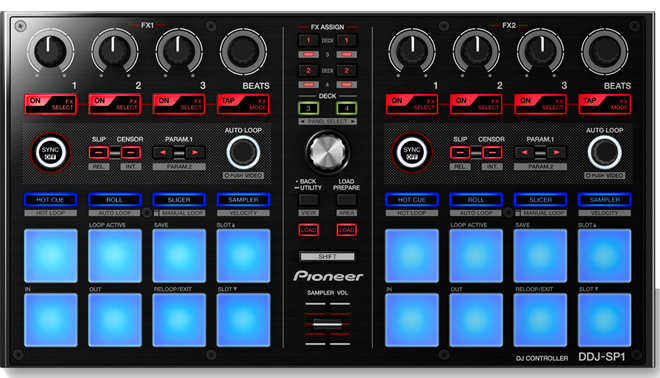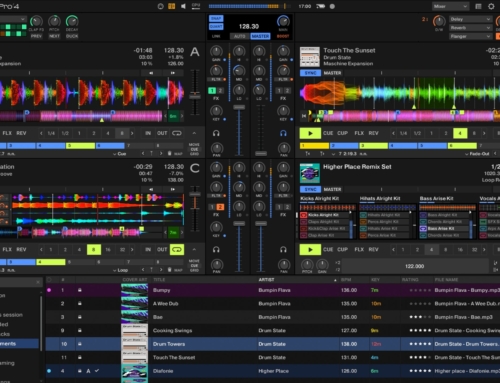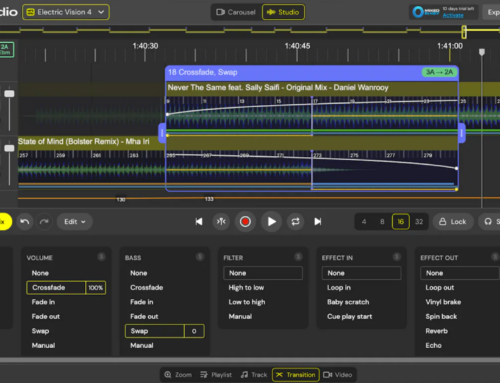Serato DJ’s now pretty much the standard, and if you’re looking for a controller that aligns with this software while providing you with the features you need, the Reloop Neon has been your best bet.
That is, until Pioneer debuted the DDJ-SP1, a four-channel sub-controller that’s compatible with Serato DJ mixers and controllers. What you get, here, functions much like the full DDJ-SX, even down to the layout, and expands your existing controller, giving you full access to Serato DJ, as no one these days should be making compromises. While not specifically for one method, the device works with laptops and time-coded CDJs and turntables.
On a basic level, the DDJ-SP1 simply adds to your controller, encompassing Pioneer’s key features and Serato’s must-use aspects. For instance, incorporating this into your setup lets you add pre-mapped buttons and dials, which give you access to six samples, eight hot cues, and more than 30 iZotope effects. Furthermore, it comes with fairly solid performance pads, including Slip, Slicer, Loop, and Roll modes, a push-button encoder, and a shift mode for browsing more functions.
For a device like this, the effects selection is particularly large. A problem with Serato is getting access to the full effects and performance modes, and including this sub-controller pretty much opens that up. How does this work? The DDJ-SP1 assigns FX1 and FX2 units to up to four active decks and allows you to go between single- and multi-effects modes.
As far as those performance pads go, the DDJ-SP1 stays true to Pioneer’s tradition. You get eight, durably-built backlit pads, all of which are easy to play with one or two fingers.
Another asset, the sub-controller effortlessly integrates with the Serato DJ SP-6 sampler. Using the parameter buttons, you’ll be able to choose from four banks of samples, each assignable to six slots. And, as is the case for controllers at this level, one of the two pads lights up once you fill the slot.
As well, you get the Sample Volume Fader, ideal for finger drum performances, and Slip Mode, which mutes the track during live edits, so you can play loops, scratch, or use the reverse feature. Then, just release the jog wheel to have the track start up in the same spot.
While you’re not getting a full controller here, what’s presented essentially unlocks Serato’s more advanced features, with a plug-and-play design. The controller provides specific FX buttons, Beat Jump, and Quantize, and further lets you incorporate Serato Video.
This latter aspect is particularly important and a major selling point. With it, you have the option to add videos into your sets, and alter them just as you do with audio – graphics, text, images, and transitions.
Keep in mind that while the video functionality is certainly a welcomed and practical touch, you won’t be able to operate audio and video together. To toggle between, you need to press shift and Auto-Loop to access the Serato Video control mode with FX video effects. Here, the pads work as usual, only just to remix the videos, rather than your audio tracks.
While all of these aspects are certainly pluses, there’s one major point all DJs – turntablists and controllerists who want a more complete setup – must keep in mind: The DDJ-SP1 might align with Serato DJ’s features but it won’t function alone with Serato software. Why’s this? The DDJ-SP1 isn’t licensed for Serato, unlike your regular controller. However, as soon as you connect it to your PC or Mac, that really doesn’t matter, as it blends in perfectly.
So, while the DDJ-SP1 won’t be your primary controller, we’ve gotten to the point in which working with an abridged or compromised version of Serato DJ isn’t really acceptable. It’s an inconvenience, and you want all of those performance pads and effects, so rather than throw out your existing controller, amend it with this to access the full software.
